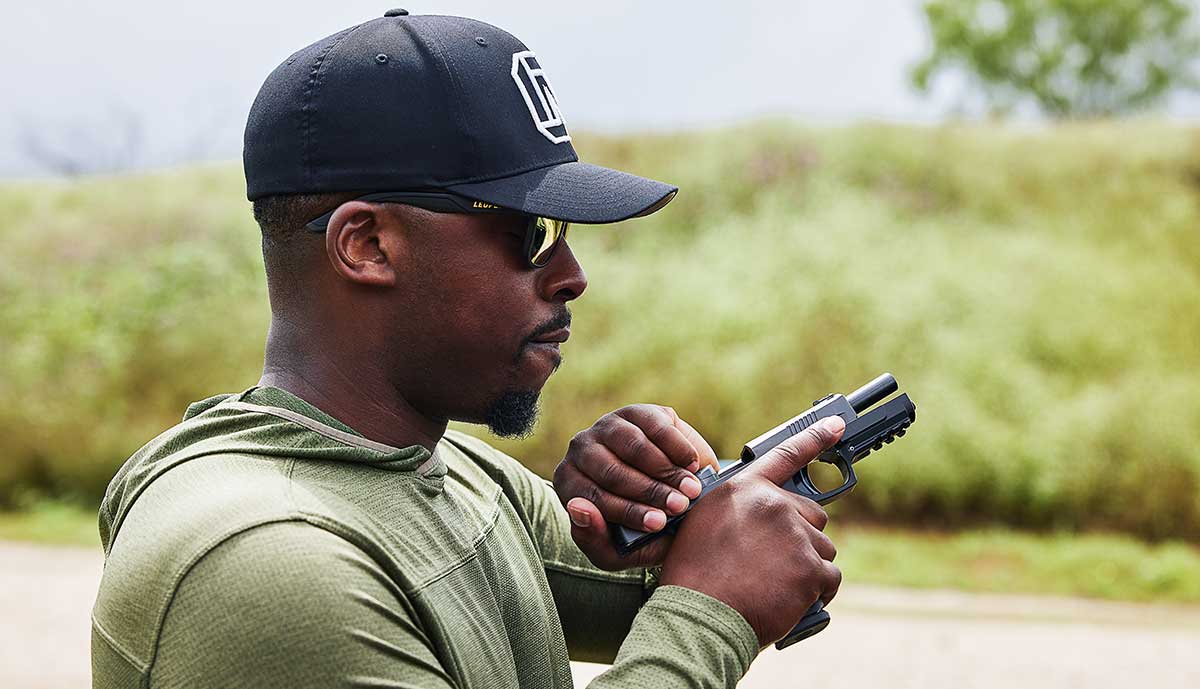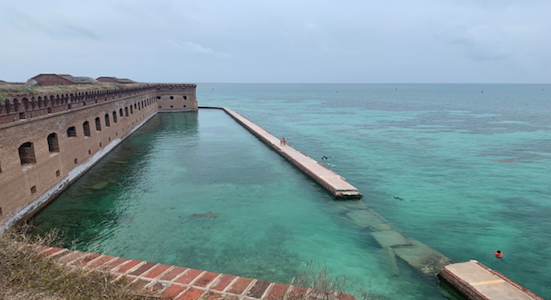I’ve been carrying a handgun (concealed) for nearly 20 years. For most of that time, I’ve carried in the 3 o’clock position, often inside the waistband (IWB). When wearing a long external shirttail, I would sometimes carry OWB. Because I evaluate and write about firearms, I have, and do, carry a variety of handguns. Initially, I carried duty-size pistols — all the time. Then came the micros, most of which I’ve tested. I’m not big on little guns with a lot of recoil, but we now have some double-stack micro nines that have enough grip, so they’re not unpleasant to shoot.
I was a normal able-bodied person for the first 10 years. However, due to injury and arthritis, I’ve progressed through a walker to a powered four-wheel cart, and finally, a powered wheelchair. I’ve also gained a considerable amount of weight. Don’t worry, I’m working on it. Throughout that progression I continued to carry my handgun in the 3 o’clock position, usually IWB. But a new breed of handguns, and a lot of discussion about appendix carry, led me to a change I’ve come to really appreciate.

Appendix Carry Pistols
As the guns rolled out, and I had the opportunity to test, then buy, the SIG P365, Springfield Hellcat, and Hellcat Pro, Girsan MC-14T, Ruger Max 9, FN Reflex, and other guns of similar size, I began looking for holsters for them, and I began experimenting with appendix carry. Comparing notes with some of my shooting buddies has been illuminating. It showed, what works for me in my wheelchair also works for my able-bodied buddies.
Personal experience, and working as an instructor with various people who have physical limitations, has convinced me of one thing. So long as you have at least one arm and hand that works, and eyes that can see, you can carry and use a defensive pistol. Some of what I’ll discuss here will work for people facing a variety of physical limitations.
For most body types, appendix carry has several advantages. First, it’s comfortable. With the right holster, belt, and gun combination, I don’t feel the gun pressing into me or hanging off me. It’s as if it’s not there. Second, it is not visible to other people. In most cases there is no printing. And for my able-bodied buddies who are now carrying in the appendix carry position, I don’t see their guns either, even when I’m looking for them. Third, it’s an easier draw. Easier when standing, easier when seated in a wheelchair or automobile.
So, how do we make this happen? Let’s start with the gun. The largest guns I’ve carried in this position have been the Springfield Echelon, S&W M&P, FN 509, and H&K VP9. I’ve also carried any one of several 1911 Commanders I own. Stepping down just a little in size, I’ve found the Taurus G3, Stoeger STR9, and Mossberg MC2C quite comfortable and concealable. Easily carried smaller guns in the appendix carry position include the Hellcat and Hellcat Pro, SIG P365, FN Reflex, Glock 43X, Ruger Security 9, Ruger Security 380, and Ruger Max 9, in addition to various S&W M&P Shields and variants, such as the Equalizer and Shield Plus.
Appendix Carry Holsters
My regular mix of IWB holsters weren’t up to the task. When wearing at the 3 o’clock position, most of my IWB holsters were in a canted position to facilitate draw. Simply moving those holsters to the appendix position resulted in the gun being canted out of position for a quick and easy draw. Plus, many of those holsters had some looseness that I didn’t want in appendix carry.

Before employing a good appendix carry holster, you must have a good gun belt. Regular men’s’ or women’s’ belts simply won’t work for carrying a gun on your waist. They don’t have the width or thickness to provide good support. You need a good gun belt. For years, I used leather gun belts made by Crossbreed or Bullard Leather Company.
In recent years, I’ve been wearing the NexBelt 1.5-inch EDC. It works great for appendix carry, because it has the stiffness needed to keep the holster secured, and it can be adjusted to the tightness you need depending on what you carry. The first holster I bought specifically for appendix carry was the Safariland Schema holster for SIG Sauer P365. It worked so well, it served as a model for some of the other guns I like to carry concealed.
When I desired to try a bigger gun, I found the Reckoning IWB holster from Crossbreed for the Springfield Echelon. This is the most vertical Crossbreed holster I’ve used, and it manages the Echelon in the appendix carry position quite well.

Crucial Concealment holsters was the source for an appendix carry holster for the Hellcat OSP, FN Reflex, and M&P Shields. It has holsters to fit many of the guns you might want to carry in the appendix position. Taurus does a good job of supplying suitable holsters for its guns, including Taurus and Rossi revolvers. For my 1911 Commanders, I went to Incognito Concealment for the right holster.
Train, Train, Train!
Having the gun and holster won’t do you a bit of good unless you’re able to deploy the gun when needed. This requires practice. If you’re in a wheelchair, the best way to practice might be with an unloaded gun at home. You may already be accustomed to practice where you lift your garment with your non-dominant hand while drawing with the dominant hand. Of special concern with appendix carry is keeping your trigger finger away from the trigger until the gun has cleared the holster and is pointed away from your body.
There is also the matter of reholstering. That’s a time when you’re likely to be pointing the gun at your groin area while maneuvering it, and you want to be sure your finger is away from the trigger and the barrel of the gun finds the holster, rather than some other area around your belt.

Final Thoughts
One more thing, before I finish. If you own and acquire holsters for several different types of guns (as I do), you may find the holsters start to all look alike, yet the fit won’t be universal. I found that tagging my holsters with a label maker has made the task of matching the right holster with the right gun much easier. The labels stick quite well to Kydex, and they will do pretty well with leather (if you find a smooth surface).
Gentlemen, of my grandfather’s era, carried pocket watches in almost the same place you would carry a gun when using appendix carry. They did this because it was convenient to pop the watch out and easily replace it when they were through. I think you’ll find appendix carry with the right gun and holster combination equally convenient. It sure works for me.
What’s your favorite carry position and why? Do you have any limitations to how your carry? Share your answers and tips for carry in the Comment section.








